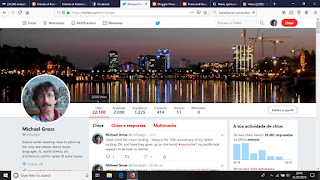So as of today, 17:17h (BST, I assume) I have been on twitter for ten years exactly.
In those years I have posted 22052 tweets
accumulated 1275 followers
and followed 2090 other accounts.
I now realise that following that many was a mistake as it makes the timeline unmanageable and I don't want the algorithm to pick "top tweets" for me. But hey - just @ me if you think I should read a specific tweet of yours, because most of the rest will just float by.
Back in 2009, I signed up to twitter just a few weeks after coming back from a science communication conference where some of the other participants were already using it and talking about it all the time. The adoption was also accelerated by the fact that MySpace was beginning turn into a ghost town at around that time, and many of the contacts I had there migrated to twitter.
Since then, the tweets of a certain racist in high office have spoiled the experience a bit, I lost control of my timeline, and I also don't like the direction that twitter is changing (to become more like facebook, apparently). When the new version hit me earlier this week, I thought I would have to leave as I hated it so much, but then I discovered the North Star symbol in the top right corner above the timeline, where you can switch from algorithm-controlled nonsense (now including random people's likes - why?) to a simple format where all tweets are listed chronologically as they should be.
Anyhow, I guess I will stick around a bit longer, but don't expect me to see everything you tweet.

For reasons unknown, my twitter has reverted to the old style after a few days with the new one - so I'm immortalising its look here, in case they switch me again and I might never see the old twitter again.
Oh, and one of the things that I still love about twitter is that it is prepared to speak Galician to me. (Facebook should do, in theory, but often falls into English, and at one point sneakily tried to switch my language to English without asking my permission.)
































